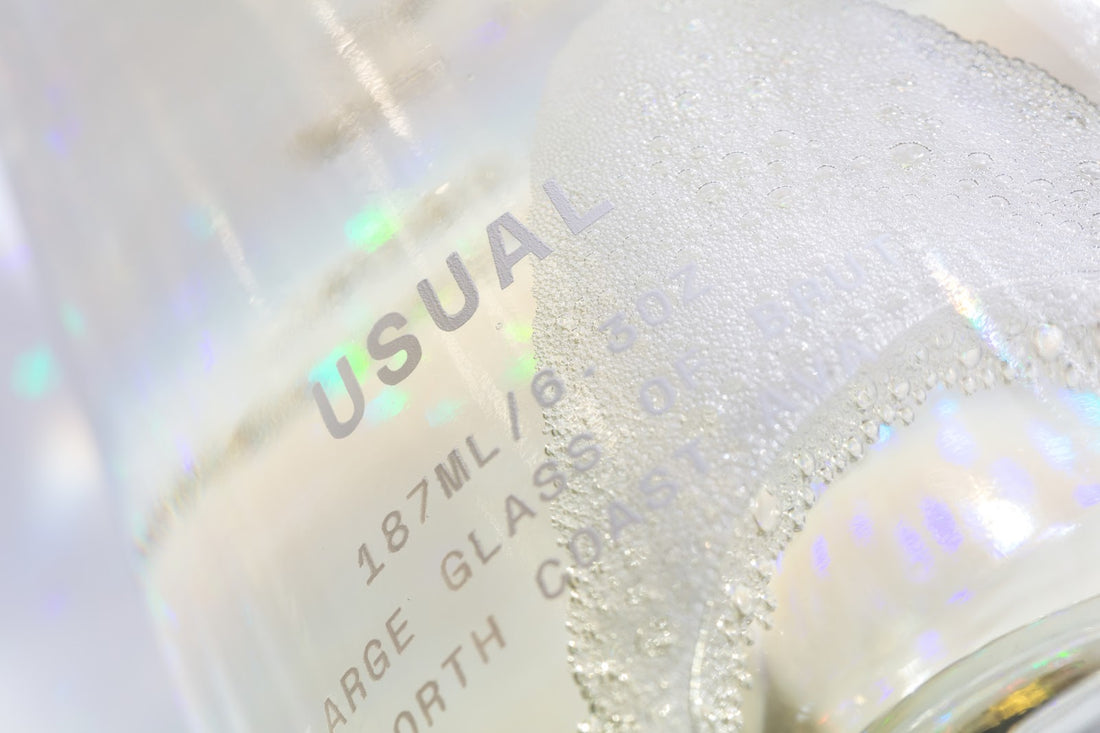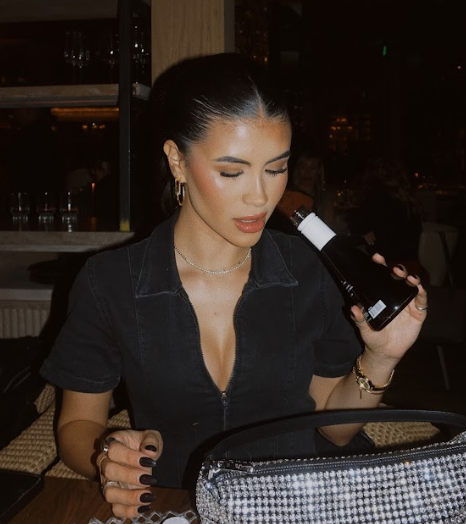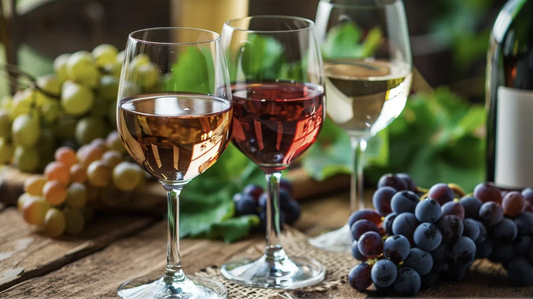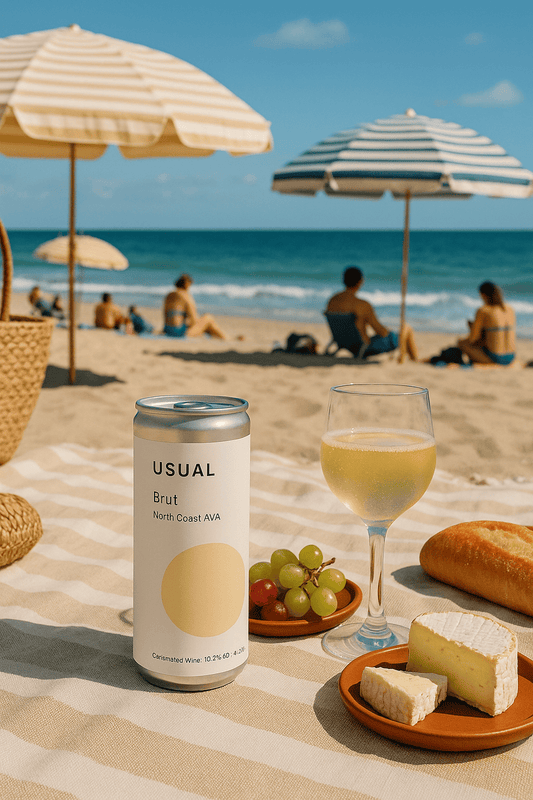
Brut Champagne: Exploring the World of Brut Sparkling Wine
McKenzie HaganThere’s a word you’ve likely noticed lurking on wine labels when you’re shopping for sparkling wine, and it’s “brut.” While you may have thought it was the name of the company, the type of wine, or even the varietal of grape, brut refers to something else entirely.
In this article, we answer some of the most common questions about brut champagne and brut sparkling wine, including what it is, how it’s made, how to serve it, and which foods are best for pairing with this scintillating wine.
Is Brut Champagne or Sparkling Wine?
Let’s get this first question out of the way. Champagne and sparkling wine are indeed two distinct drinks, but it’s a fine line of distinction. While not all sparkling wine is Champagne, all Champagne is sparkling wine.
What Does Brut Mean in the World of Wine?
In short, brut is the French word for dry.
Therefore, brut sparkling wine refers to a dry sparkling wine. Brut is also a term that’s used to describe Champagne. However, when winemakers refer to brut wine, they are referring to the style of wine, rather than any particular variety.
A Brief History of Brut Champagne
The history of brut champagne can be traced back to the early 19th century when champagne producers started to make drier versions of their wines in response to changing tastes. Before this time, most champagnes were sweeter, as sugar was used to balance the high acidity of the grapes grown in the Champagne region. As the popularity of brut champagne grew, it became the dominant style, with the majority of champagne houses producing at least one brut offering in their portfolio. Today, brut champagne is synonymous with luxury and celebration, enjoyed by people all around the world.
Understanding Levels of Sweetness
A wine’s level of sweetness is determined by the level of dosage, which refers to the practice of adding a small amount of sweetened wine back into the bottle. This triggers the secondary fermentation, giving the sparkling wine its bubbles.
The Difference Between Brut Champagne and Other Sparkling Wines
While brut champagne and other brut sparkling wines share a common dryness, there are some key differences between them. The most significant distinction is the region in which the grapes are grown and the wine is produced. As mentioned earlier, champagne can only be called as such if it is produced in the Champagne region of France. Additionally, the specific grape varieties used in brut champagne are usually chardonnay, pinot noir, and pinot meunier. Other sparkling wines may use different grape varieties, leading to unique flavor profiles. Furthermore, the production methods and regulations for making brut champagne are more stringent compared to other sparkling wines, often resulting in higher quality and more complex flavors.
When shopping for sparkling wine, or Champagne, you can pick one to suit your taste by checking the wine label for these terms:
-
Brut Nature or Brut Zero: The driest of the dry, this brut is highly acidic and intense.
-
Extra Brut: Another term for extra dry, it’s not quite as dry as brut nature, but still highly acidic.
-
Brut: With anywhere between 0-12 grams of sugar per liter, brut is dry but slightly less mouth-watering than brut nature or extra brut.
-
Extra Sec: A dry sparkling wine with hints of fruity sweetness.
-
Sec: A brut with more residual sugar yet still balanced by acidity.
-
Demi-Sec: A lovely and sweet brut with intense fruit flavors, such as apricots and lychee.
-
Doux: As sweet as you can get, this sparkling wine has more sugar than a can of Coke.
How Are Brut Champagnes and Sparkling Wines Made?

When it comes to winemaking, there are three main ways of creating bubbly.
-
Traditional: This is the most expensive method and requires a lot of manual labor.
-
Transfer method: This method ferments in the bottle, but winemakers also transfer it into tanks to filter sediment.
-
Tank method: This is the cheapest method and utilizes large stainless steel tanks, where the wine gets a second fermentation.
While each method has its benefits (the latter two are much more cost-effective), the traditional approach is how iconic Champagne, such as Dom Perignon, and Spanish Cavas are made.
The Unique Characteristics of Brut Champagne
One aspect that sets brut champagne apart from other sparkling wines is the aging process. By law, non-vintage brut champagne must be aged for at least 15 months, while vintage brut champagne requires a minimum of 36 months. This extended aging period allows for the development of complex flavors and a creamier texture, giving brut champagne its distinct taste and mouthfeel.
To produce bubbly the traditional way, winemakers make the base wine the same way they would make any wine. Check out our guide on how wine is made to learn more.
The wines are then bottled, ready for the second fermentation. This is called the “méthode champenoise,” and it’s where sparkling wine gets its carbonation.
During this time, the yeast in the wine dies, leaving sediment in the neck of the bottle. It’s then up to the winemaker to turn the wine in the bottle — by hand — every day to slowly remove the build-up of sediment.
Then the dosage takes place. Remember, for brut wine, this means very little sugar is added to the bottle.
What to Expect from the Taste of Brut Champagne and Sparkling Wine
Because brut refers to a wine’s level of sweetness rather than a specific variety of grape, we cannot tell you what every brut wine tastes like as they vary greatly.
For example, a brut sparkling wine made from cabernet sauvignon grapes grown in Napa will have different flavors than a brut made from a blend of pinot noir and chardonnay grown in the Champagne region of France.
However, what we can tell you is that brut feels sharp and crisp on the tongue, with the slightest hint of sweetness.
The Perfect Temperature for Serving Brut Champagne

Brut should be served the same as any other sparkling wine or Champagne: nice and cold.
To enjoy at the best temperature, leave your bottle of bubbly in the fridge for at least three hours. If you’re running short on time, pop it in an ice bucket filled with ice and water. You can either invest in a quality ice bucket or get creative by turning your sink into one.
To keep your bubbles cool, pour into Champagne flutes. The long stems of the flutes will stop the wine from being warmed by your hands. If drinking Usual Brut straight from the bottle, it’s a good idea to keep the bottle on ice between sips.
Pairing Brut Champagne and Sparkling Wine With Food
Dry sparkling wines pair beautifully with a range of foods. Whether it’s French Champagne, Spanish Cava, Italian Prosecco, or a sensationally citrusy bottle of Usual Wines brut, there are plenty of foods that complement the dryness of the wine.
The bubbly sharpness of brut wines cut through fats like a knife, and it pairs beautifully with cheese and fatty meats. Brut also helps balance heavy or salty meals, adding a much-needed touch of acidity.
Ah, Brut Champagne: How Sweet It Is

Choosing wine isn’t always easy. It seems most wine labels are written in a code that only sommeliers can crack. However, we hope this article has helped you decode the language a little better.
When choosing sparkling wine, remember that brut means dry. It is not a grape varietal, nor is it a type of wine such as red wine. It’s merely a descriptive word.
Brut is an ideal wine if you enjoy sharp sensations on the palate with a gentle hint of sweetness. If you’re looking for something mouth-wateringly dry, opt for brut nature or extra brut. Just be warned that these are very sharp.
Brut sparkling wine is also a low-sugar wine, ranging anywhere between 0-12 grams of sugar per liter. This makes it an ideal choice if you’re reducing your sugar intake but still want to enjoy a glass every now and then. If you prefer your bubbly a little sweeter, opt for extra sec, sec, or demi-sec. If you want a sugar rush, doux is for you.
Celebrating with Brut Champagne
Brut champagne and sparkling wine have become the go-to choice for celebrations, special occasions, and toasting moments. Its crisp, refreshing taste, and lively bubbles make brut champagne the perfect drink to commemorate life's milestones or simply enjoy a relaxing evening with friends and family.
Serving your sparkling wine cold is always the best option. Just pop that beauty in an ice bucket to chill. And don’t forget a nice dry glass of bubbly goes beautifully with salty food, so there’s nothing wrong if you want to pair it with a burger and fries. (In fact, we encourage it.)
To discover a bubbly that’s dry, refreshing and made with zero additives, check out our 12-pack of Usual Brut, so you’ll never run out of the good stuff.











